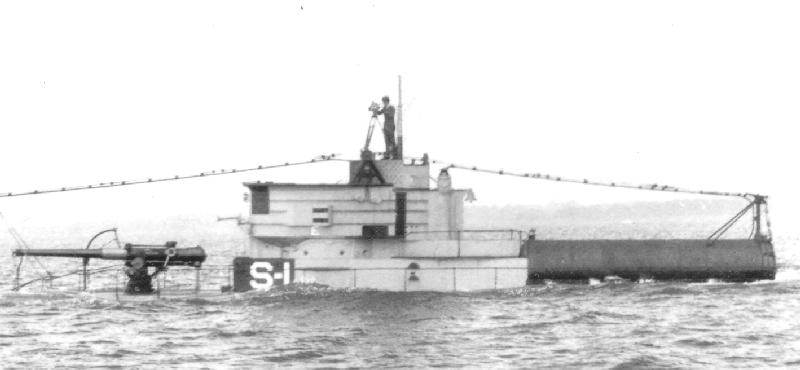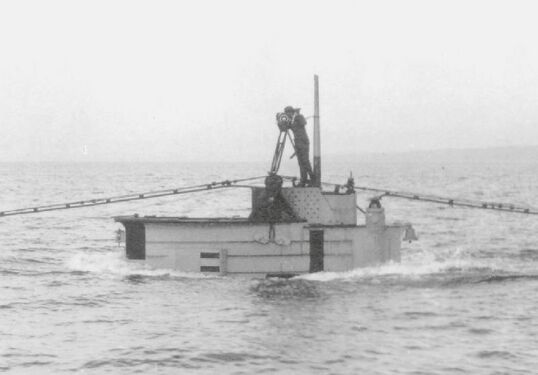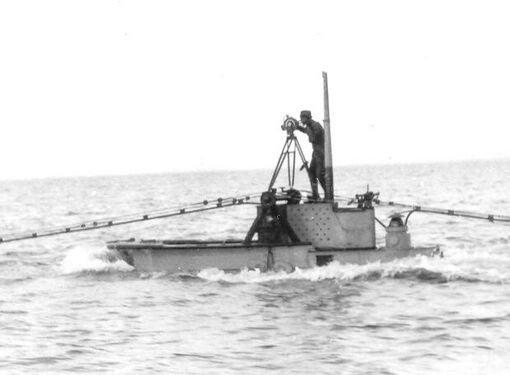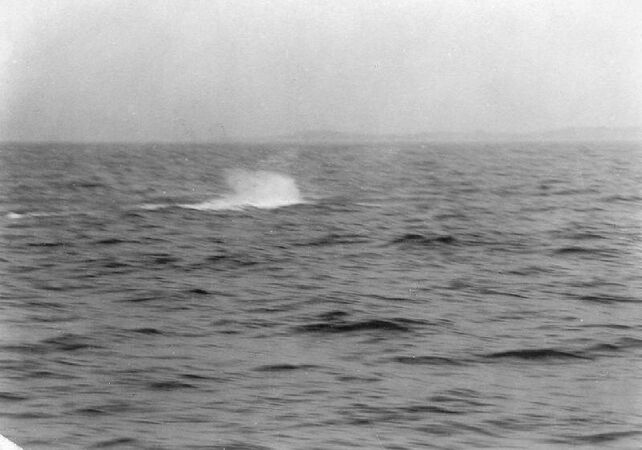S-1: Difference between revisions
Pbcjohnston (talk | contribs) Text updates |
Pbcjohnston (talk | contribs) Changed plane photo with replacement |
||
| Line 35: | Line 35: | ||
[[File:S-1 | [[File:S-1 stbd quarter.jpg|left|500px]] | ||
<div style="text-align: justify;"><span style="color:#00008B">S-1 was selected by the Navy to test the concept of operating an aircraft from a submarine. She is shown here conducting experiments with a Martin MS-1 floatplane in Willoughby Bay just off Naval Station Norfolk, VA., October 23, 1923. Her after deck has been widened, and a cylindrical watertight steel hangar has been installed aft of the fairwater. The plane was stored in the hangar disassembled. It had to be pulled out and assembled, then the boat would submerge the after deck until it floated off. The pilot would then start the engine and make his take off run. After landing the process would be the reverse. From first breaking the surface to the airplane taking off took at least 30-40 minutes, and the process required a flat calm sea to do safely. Testing showed the concept to be unpractical and the aircraft and hangar were removed. This was the only time that a USN submarine has operated an airplane. | <div style="text-align: justify;"><span style="color:#00008B">S-1 was selected by the Navy to test the concept of operating an aircraft from a submarine. She is shown here conducting experiments with a Martin MS-1 floatplane in Willoughby Bay just off Naval Station Norfolk, VA., October 23, 1923. Her after deck has been widened, and a cylindrical watertight steel hangar has been installed aft of the fairwater. The plane was stored in the hangar disassembled. It had to be pulled out and assembled, then the boat would submerge the after deck until it floated off. The pilot would then start the engine and make his take off run. After landing the process would be the reverse. From first breaking the surface to the airplane taking off took at least 30-40 minutes, and the process required a flat calm sea to do safely. Testing showed the concept to be unpractical and the aircraft and hangar were removed. This was the only time that a USN submarine has operated an airplane. | ||
Revision as of 17:19, 9 March 2025
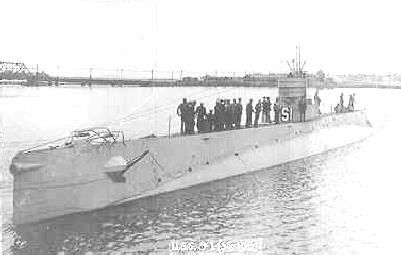
Photo in the private collection of Ric Hedman

Photo courtesy of the Boston Public Library, Leslie Jones Collection. Used with permission.
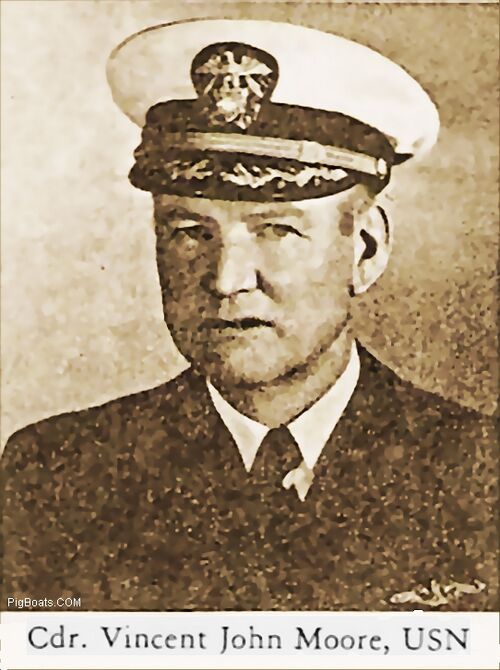
Photo provide by his grandniece, Patricia M. Lynn.
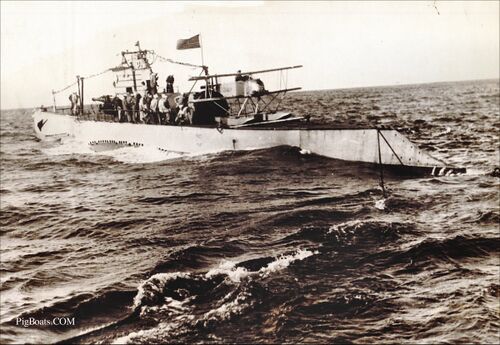
Newspaper Photo Caption: THE FIRST SUBMARINE AIRPLANE IS TESTED OFF NEW LONDON
New London, Connecticut -- The United States Navy held the first tryout of the "Peanut Plane" off New London recently. It is a tiny three cylinder airplane installed in a waterproof casing on the deck of the U.S. submersible S-1 and can be launched in the short time of nine minutes. The plane weighs only 1000 pounds and is flown by the first "Submarine Pilot" LT Dolph C. Allen. Photo shows the plane completely assembled and ready for flight, which is launched by lowering the stern of the submarine. 9-2-26
It should be noted that the launching time of nine minutes was an initial estimate only. In actual practice it turned out to be more like 30-40 minutes in calm weather and good conditions.
The first full cycle of surfacing, assembly, launching, retrieving, disassembly, and submergence took place on 28 July 1926 on the Thames River at New London.
News photo in the private collection of Ric Hedman.
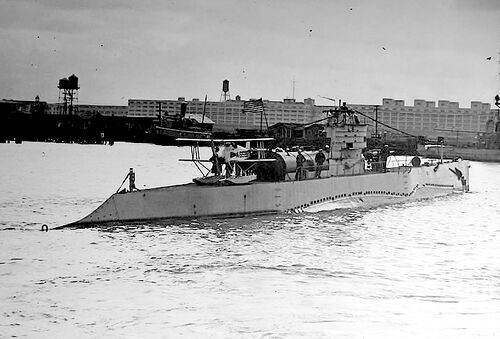
U.S. Navy photo
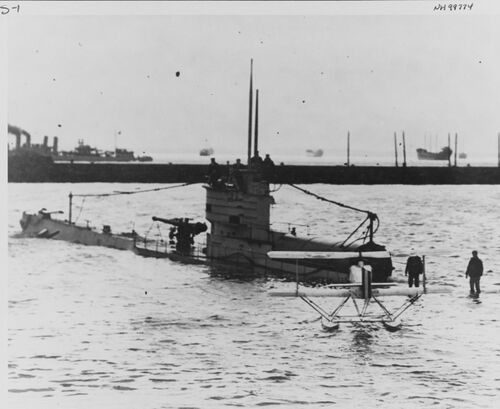
NHHC photo NH 99774.
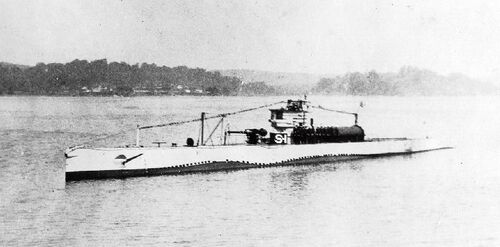
Photo in the private collection of Ric Hedman.
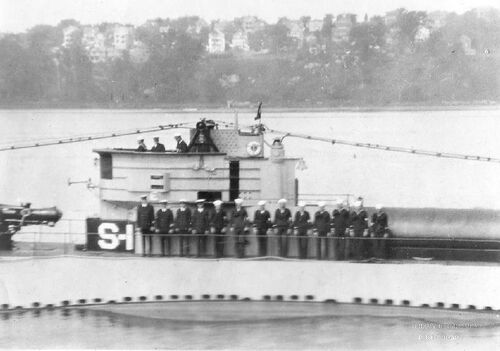
U.S. Navy photo
Photos in the private collection of Ric Hedman
Photos in the private collection of Ric Hedman

Photo in the private collection of Ric Hedman

Photo in the private collection of Ric Hedman
Page created by:
Ric Hedman & David Johnston
1999 - 2023 - PigBoats.COM©
Mountlake Terrace, WA, Norfolk, VA
webmaster at pigboats dot com

